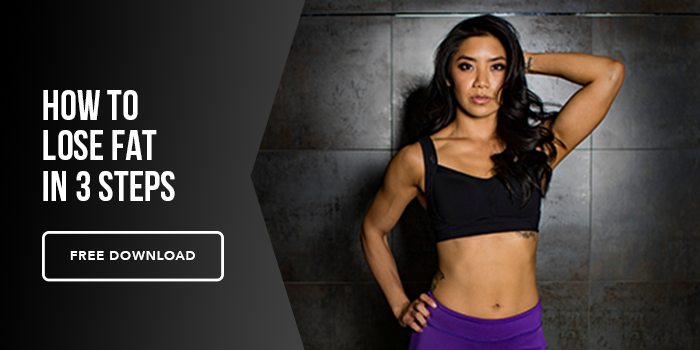Most people treat strength training like hot sauce: a nice addition, but not the main ingredient. They focus on cardio, yoga, group classes — and then toss in a few dumbbell curls and call it good.
But here’s the truth: strength training shouldn’t be a side dish. It’s the base of the meal.
Whether your goal is fat loss, longevity, better performance, or to just be strong enough to strain the pasta with one hand — resistance training is the single most effective way to transform your body and keep it functional for the long haul.
Here’s why it deserves the spotlight.
1. More Muscle = Higher Resting Metabolic Rate
Your Resting Metabolic Rate (RMR) is the number of calories your body burns just to stay alive — breathing, pumping blood, repairing tissues, etc. It accounts for about 60–75% of your daily energy expenditure.
And what drives RMR more than anything else?
Muscle mass.
Muscle is metabolically active tissue, meaning it burns calories even when you're doing absolutely nothing. For every pound of muscle you add, you can expect to burn an additional 6–10 calories per day at rest.
That may not sound like much, but multiply it by 10, 20, 30 pounds of added muscle — and you’ve got yourself a more efficient engine that’s burning more fuel 24/7.
In other words: muscle makes your metabolism work harder for you, not against you.
2. It Changes Your Body Composition — Not Just the Number on the Scale
If all you care about is the scale dropping, sure — cardio works.
But if you care about losing fat and looking leaner, strength training is essential.
Here’s why: when you lose weight through cardio alone, your body will often burn both fat and muscle. That’s a recipe for the dreaded “skinny fat” look — low weight, low muscle tone, high body fat percentage.
Strength training tells your body, “This muscle is important — keep it.”
So, while you still create a calorie deficit through diet and training, resistance work ensures the weight you lose is mostly fat — not the lean tissue that keeps your metabolism humming.
3. It Preserves Muscle While Dieting
When you're in a calorie deficit, your body doesn’t always know what you're trying to lose. Without a strength stimulus, it starts breaking down muscle for energy.
That’s bad for aesthetics. Bad for metabolism. And bad for your long-term health.
But studies show that when participants strength train while dieting, they preserve significantly more muscle and lose more fat — even when eating the same number of calories as cardio-only groups.
Resistance training acts like a muscle-retention signal — saying, “Burn the fat, not the muscle.”
4. It Builds Stronger Bones, Joints, and Connective Tissue
People tend to associate strength training with big muscles — but the benefits go much deeper.
Lifting weights increases bone mineral density, strengthens tendons and ligaments, and improves joint stability. That means fewer injuries, less pain, and more freedom of movement.
And it’s not just a young person’s game.
As you age, maintaining joint integrity becomes even more important. Strength training reduces the risk of falls, fractures, and conditions like osteoporosis. It keeps you mobile — which means independent — as you get older.
You don’t need to move like a gymnast. You just need to move without wincing every time you pick something up.
5. It Supports Long-Term Hormonal Health
Strength training doesn’t just impact muscle — it impacts your hormones too.
When done correctly, resistance training improves:
- Insulin sensitivity (meaning better carbohydrate metabolism and reduced fat storage)
- Growth hormone and testosterone levels (which support fat loss and recovery)
- Cortisol regulation (important for stress management)
These hormonal adaptations make it easier to build muscle, burn fat, sleep better, and handle life’s curveballs without falling apart.
6. It Boosts Mental Health and Confidence
We talk a lot about physical changes — but the mental transformation is just as powerful.
Lifting weights improves mood, reduces symptoms of depression and anxiety, and provides a sense of mastery and progress. You get to see yourself get stronger week after week — a feeling that’s hard to replicate elsewhere.
This isn’t self-help fluff. A 2023 meta-analysis in the British Journal of Sports Medicine found that resistance training was one of the most effective non-pharmaceutical interventions for reducing depressive symptoms.
You’re not just building a better body. You’re building a more resilient mind.
7. It Supports Longevity and Functional Independence
Longevity isn’t just about living longer. It’s about living better for longer.
Muscle mass is a key predictor of all-cause mortality, especially in older adults. People with higher levels of muscle and strength are less likely to die from chronic disease, suffer falls, or lose their independence as they age.
You don’t need to be jacked to benefit. Even modest gains in strength have been shown to improve outcomes.
And no, pickleball alone doesn’t cut it.
8. It Gives You Flexibility With Other Fitness Goals
Once strength training becomes your foundation, it makes all your other goals easier to build on.
Want to run a 5K? Strength training reduces your injury risk and helps you maintain form under fatigue.
Want to improve your posture? Strength training develops the muscles that keep your body aligned.
Want to lose fat, build muscle, and stay consistent? Strength training is the one tool that ties it all together.
It’s not that you shouldn’t do cardio or mobility work. You should. But resistance training is what holds it all together — like duct tape, but without the stickiness and Home Depot smell.
Wrap-Up: Strength Training Isn’t Optional — It’s Foundational
Strength training isn’t just about big biceps or Instagram clips of deadlifts. It’s about creating a body that works — now, and 30 years from now.
✔ It builds and maintains metabolically active muscle
✔ It improves bone density and joint health
✔ It protects against fat gain and muscle loss
✔ It supports hormonal balance, longevity, and mental health
✔ It lays the groundwork for every other fitness goal
So, if you’re building your fitness routine from the ground up — start with strength.






